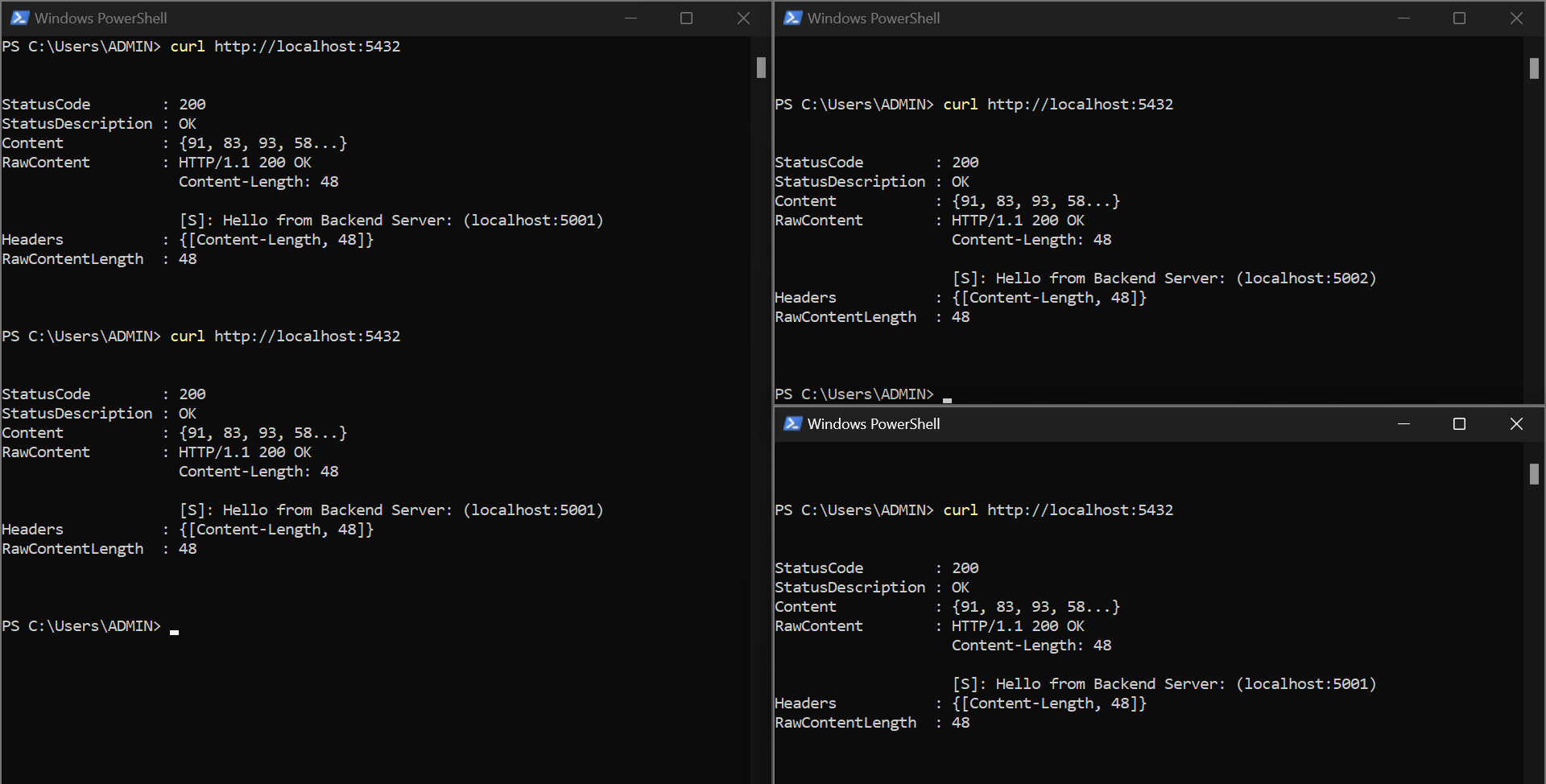How It Works
This project simulates a load balancer routing traffic to multiple backend servers. The goal is to minimize response time, maximize resource utilization, and ensure no server is overloaded.
Starting Three Servers



We initiate three backend servers running on ports 5001, 5002, and 5003, respectively.
Executing the Load Balancer

The load balancer is started and begins listening for client requests on port 5432.
Making Requests to the Load Balancer


Several requests are made to the load balancer at localhost:5432. The load balancer distributes these requests across the servers using the Round Robin algorithm, ensuring responses are routed efficiently.
Terminating a Server

In the event that one of the servers (e.g., port 5003) goes down, the load balancer's health check mechanism identifies the failure and stops routing traffic to the affected server.
Handling Requests During Server Downtime

Even when a server is down, the remaining servers continue to handle incoming requests seamlessly, ensuring uninterrupted service.
Back in Action

When a previously down server (port 5003) is restored, the load balancer automatically re-integrates it into the rotation, resuming normal request distribution using the Round Robin algorithm.